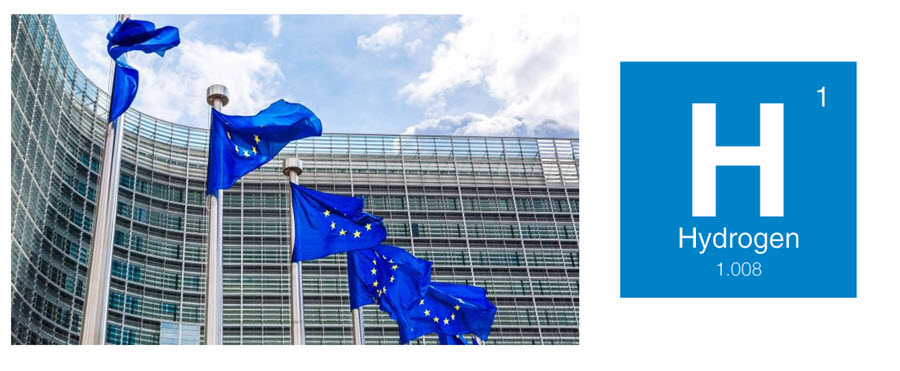
- A new study by the European Hydrogen Backbone initiative estimates an increase of 2,300 TWh in hydrogen demand in the EU and the UK by 2050, equal to around 20-25% of the future energy demand of the two areas
- The EU and the UK have the potential to meet this demand through domestic production and with the ability to import hydrogen from neighboring countries
- Pipelines represent the most convenient form of transport compared to other modes such as by sea or by power lines
Brussels — The European Hydrogen Backbone (EHB) today presented an analysis on the future supply, demand and transport of hydrogen in Europe. This study complements the recently published EHB map, which identified a hydrogen transport infrastructure in Europe of around 40,000 km by 2040, connecting 19 Member States, Switzerland and the UK.
The future high demand for hydrogen will make Europe a zero-emission continent
The EU and the UK will have a demand of around 2,300 TWh (of which 2,000 TWh in the EU alone) by 2050. This corresponds to around 45% of the demand for gas in the EU and the UK for 2019 alone. hydrogen plays a crucial role in the decarbonisation of industry, particularly in sectors such as chemicals (ammonia and high-value chemicals), steel and fuel production. Hydrogen will also be important for the production of electricity, as a fuel used in heavy transport and in some countries also in the heating of buildings.
Europe could be self-sufficient in hydrogen production and resort to imports from neighboring countries
The total demand for hydrogen could potentially be met by green hydrogen produced in the EU and the UK, through the use of renewables. However, the production of such quantities of green hydrogen nationwide will be subject to public acceptance linked to accelerated growth in expected renewable capacity, as well as funding and the definition of market creation rules and quality standards. Economic data on the costs associated with the production of green hydrogen will allow a rapid increase in installed capacity. In addition to green hydrogen, large quantities of relatively cheaper blue hydrogen can be produced in Europe to accelerate emissions reductions and facilitate the energy transition process.
The European Hydrogen Backbone is cost effective and essential in creating a cross border market
Reusing part of the existing gas infrastructure is essential to connect those areas where hydrogen supply and demand intersect. The pipeline network represents the most effective and economical option over long distances, with transport costs equal to 0.11-0.21 / kg per 1,000 km, much more competitive than sea transport for distances between Europe and countries. neighboring. Furthermore, the study demonstrates that for large volumes of transported energy, when the final product is hydrogen, methane pipelines are the most economically competitive option even with respect to power lines, even without considering the costs related to flexibility, such as storage.
“Our new study shows that hydrogen will be crucial in various energy-intensive sectors and the infrastructure will act as a facilitator to connect demand with supply in Europe and to enable imports that will be cost-competitive” – said Daniel Muthmann, coordinator of the EHB initiative and head of OGE’s strategy, development, policy and communication.
The study is available at the link: www.gasforclimate2050.eu/publications .
Read the most up to date Fuel Cell and Hydrogen Industry news at FuelCellsWorks




